host-microbiome interactions
Host-microbiome interactions in the ocean and beyond
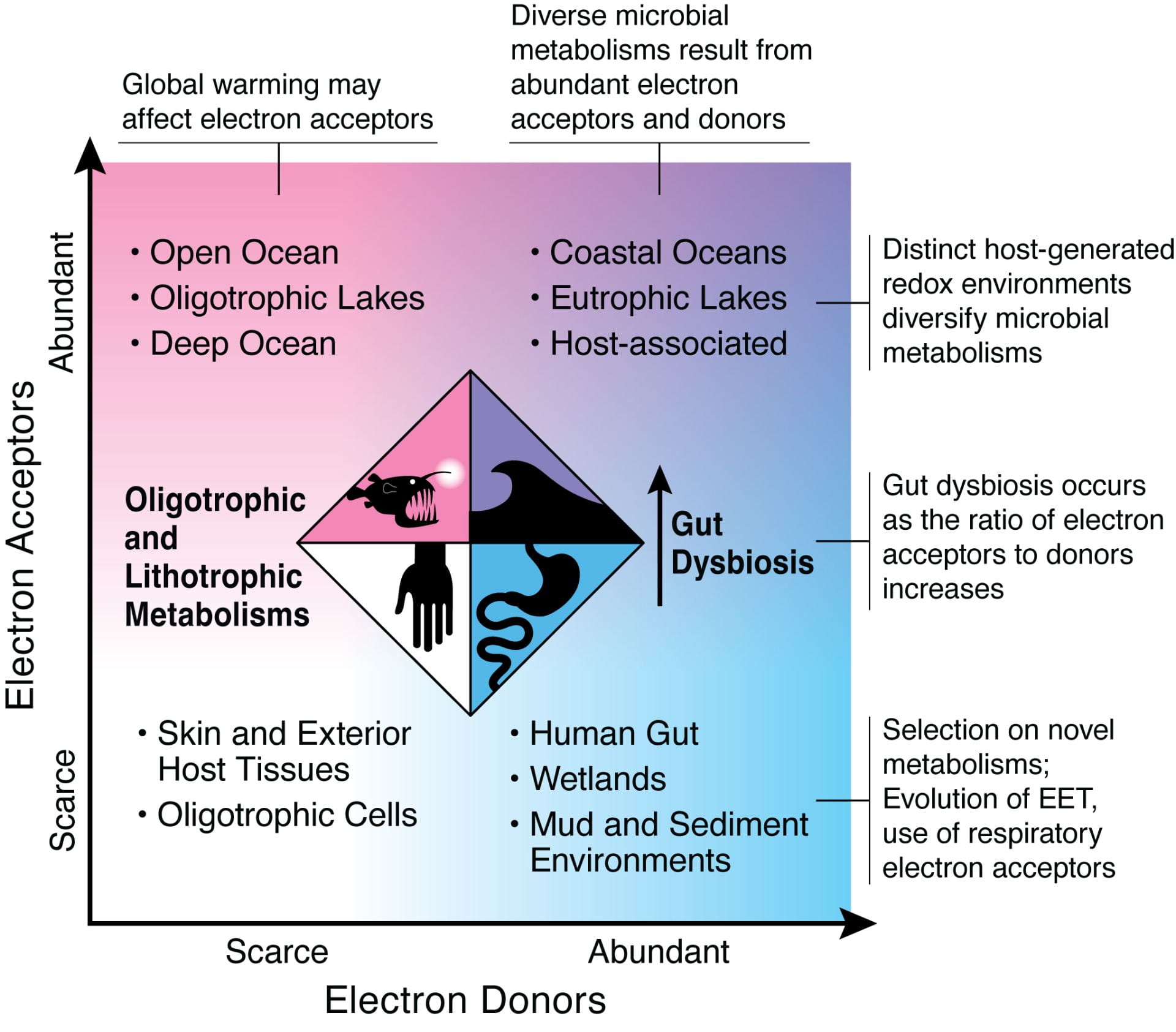
There are commonalities across environmental and human microbiome, including how redox environments select for particular microbial metabolisms.
2022. Pfister, C.A., Light, S. H. Bohannan, B., Schmidt, T., Martiny, A., Hynson, N.A., Devkota, S., David, L. Whiteson, K. Conceptual exchanges for understanding free-living and host-associated microbiomes. mSystems e01374-21. https://doi.org/10.1128/msystems.01374-21
Figure credit to Brooks Bays
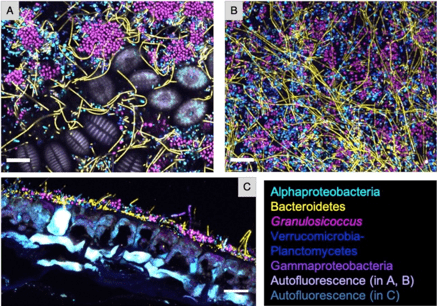
Fantastic imaging by Jessica Mark Welch, Tabita Ramirez-Puebla and colleagues at the Marine Biological Lab show a remarkable assemblage of microbes on the surface of kelp, including Granulosicoccus (Ramirez-Puebla et al 2022, 10.1186/s40168-022-01235-w)
Kelp exude ~16% of their fixed carbon as dissolved organic carbon. These carbon dynamics are likely central to provisioning their microbiome and important to the coastal carbon cycle. See Weigel & Pfister 2020 Ecology

The kelp-surfgrass mosiac in the lower intertidal at Tatoosh Island is rich with microbial associates.
Microbes in association with the Mediterranean seagrass Posidonia metabolize amino acids, releasing ammonium and increasing host access to nitrogen. Our stable isotope enrichment experiments showed us that this association enhanced water column productivity but was negatively affected by the low pH conditions in proximity to CO2 vents.

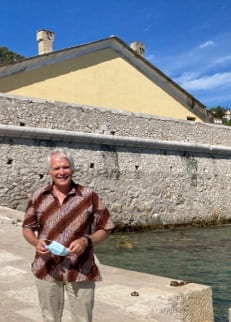

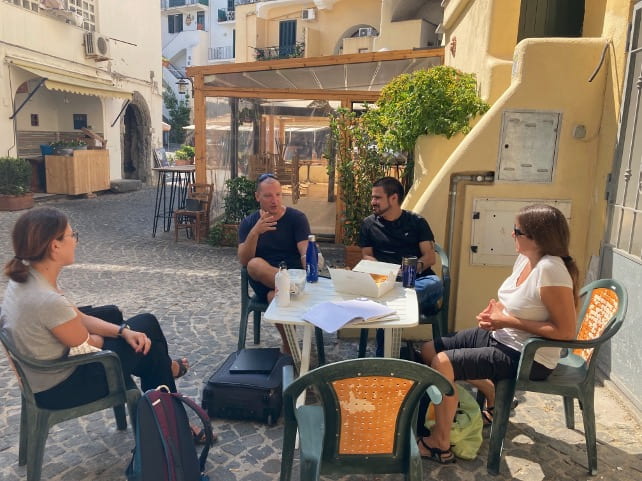
Microbes mediate nitrogen cycling along rocky shores
Although it is recognized that the upwelling of nitrogen-rich water is a source of productivity in the northeast Pacific, our experiments and observations are also revealing that animal excretion is a significant source of ammonium in coastal waters and tidepools. Algal productivity within tidepools is boosted several-fold by the presence of mussels (Pfister 2007) and seawater in close proximity to Tatoosh Island has elevated ammonium levels compared with seawater away from the Island (Pfister et al. 2007). In collaboration with Mark Altabet and Santhiska Pather at UMass and David Post at Yale University, we used stable isotopes in conjunction with enrichment experiments to quantify how regenerated nutrients supplied by animals affects microbial populations and coastal primary productivity.
Using tracer ammonium, we find that high rates of ammonium regeneration are matched by rapid ammonium uptake, highlighting the importance of local nitrogen supply (Pather et al. 2014, L&O).
We have also compared the relative role of ammonium versus nitrate in nearshore and corresponding offshore areas and areas with increased and reduced animal abundance. We find that nearshore areas, particularly in the vicinity of the animal-rich Tatoosh Island, have a strong signal of nitrogen regenerated through animals and microbes (Pfister et al. 2014, Ecology). Our experiments indicate that microbial nitrogen transformations in the rocky intertidal are orders of magnitude more than open ocean areas, and that the California mussel contributes to this microbial nitrogen processing (Pfister et al. 2016, Biogeosciences, Pfister and Altabet 2019, Biogeosciences, from NSFOCE 09-28232).
Microbial nitrogen transformations seems ubiquitous in these coastal areas and, in collaboration with researchers at nearby Argonne National Labs (Folker Meyer, Dion Antonopoulos), we sequenced microbial populations of Tatoosh Island to understand both the identity and function of microbes in this system (Pfister et al 2010, Pfister et al. 2014).
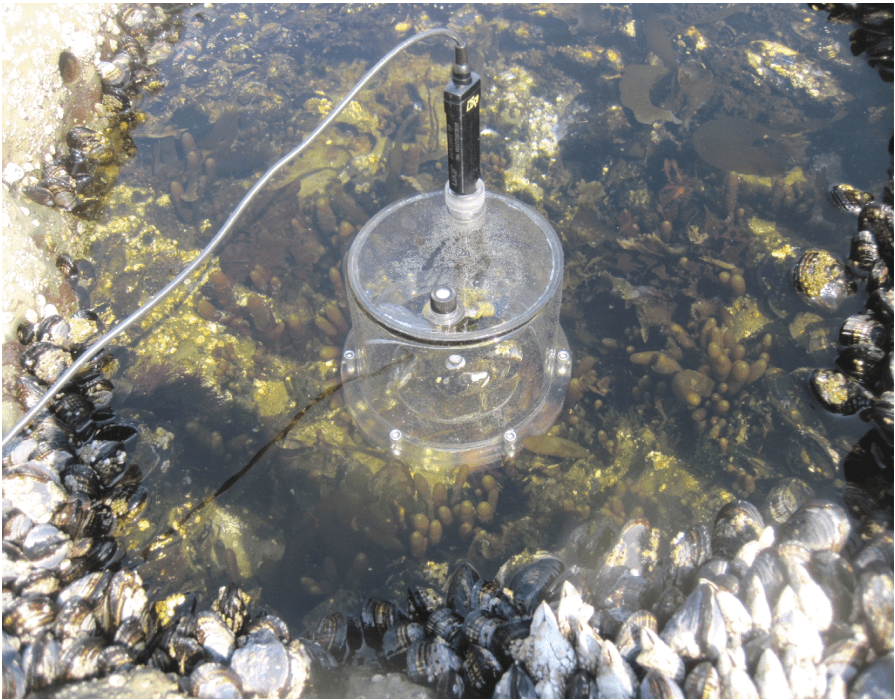
Chamber experiments in tidepools at low tide reveal nitrogen transformations by microbes and excretion by animals (Pfister et al. 2016, Biogeosciences, Pfister and Altabet 2019, Biogeosciences)
